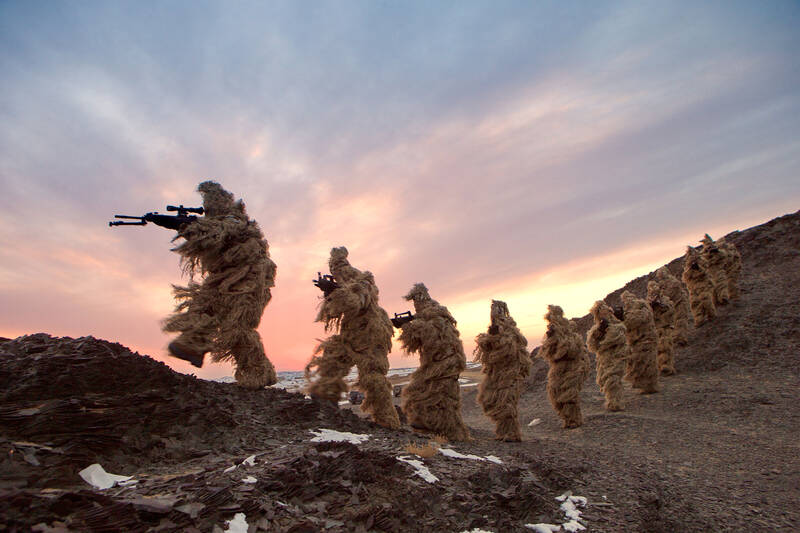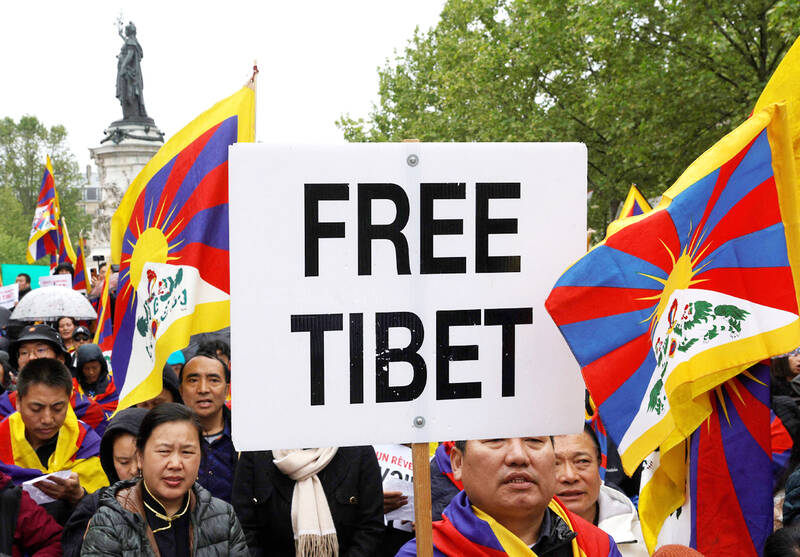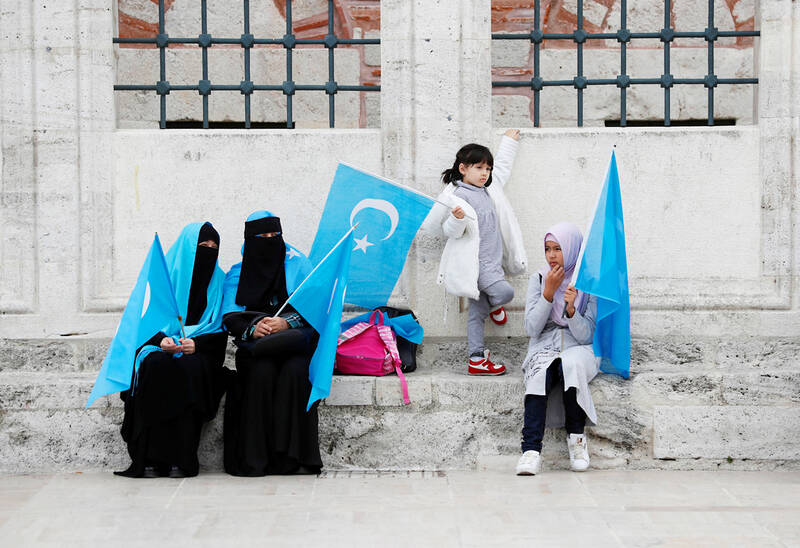A quarter of the world’s countries have engaged in transnational repression — targeting political exiles abroad to silence dissent — in the past decade, new research reveals.
The Washington DC-based non-profit organization Freedom House has documented 1,219 incidents carried out by 48 governments across 103 countries, from 2014 to last year.
However, a smaller number of countries account for the vast majority of all documented physical attacks on dissidents, with China the most frequent offender, responsible for 272 incidents, or 22 percent of recorded cases. Russia, Turkey and Egypt also rank among the worst perpetrators.

Photo: Reuters
High-profile incidents of transnational repression include the 2018 murder of journalist Jamal Khashoggi by a hit squad at Saudi Arabia’s consulate in Istanbul. The Russian president, Vladimir Putin, has targeted his foes in the UK, including the 2006 radiation poisoning of the Russian dissident Alexander Litvinenko. This was followed by a string of more than a dozen other suspicious deaths of Russians on British soil that are also suspected of being tied to the Kremlin.
Transnational repression is the state-led targeting of refugees, dissidents and ordinary citizens living in exile. It involves the use of electronic surveillance, physical assault, intimidation and threats against family members to silence criticism.
“This happens inside democracies,” said Yana Gorokhovskaia, research director of Freedom House. “Every year, we record cases in places like the United States, Canada, the UK, France, Germany and Sweden. That would probably surprise people because I think there’s an assumption that there’s a level of protection and that autocrats can’t reach into democracies.”

Photo: AFP
Iran is also featured in the top 10 perpetrators, with 47 cases logged over the timeframe of the research. Several of these campaigns have been publicly exposed in recent years.
In 2023, journalists at the BBC Persian news outlet were targeted with offensive messages and threats of sexual assault. In March last year, a presenter for Iran International, a Farsi-language news channel, was stabbed outside his home in Wimbledon, south London.
Muslims bear the heaviest burden of transnational repression, accounting for 64 percent of targeted incidents worldwide.

Photo: Reuters
The Uighurs, a mostly Muslim ethnic group from northwest China that are the target of widespread crimes against humanity within the country, are subjected to sustained monitoring, threats and policing by the Chinese authorities, according to the research.
“Uighurs don’t have to be activists to be targeted,” said Gorokhovskaia. “It’s not that censoring themselves would solve this problem for them. It’s because their whole group is viewed as a threat, and so that’s why they’re being targeted.”
In 2022 a spyware campaign targeting Uighurs by posing as Android apps, including messaging services, was discovered by cybersecurity experts. Chinese students living abroad, including in the UK, have also reported being watched and followed.

Photo: AFP
China has been accused of operating secret police stations around the world to monitor and repress opponents of the ruling Communist party. In 2023, US authorities discovered an illegal Chinese police station operating from an office in New York. Beijing had also targeted Tibetans and Hongkongers, said Gorokhovskaia.
“We’re struggling with the magnitude of what the People’s Republic of China is doing. It’s everywhere, on campuses. It’s through social media and online communication. It’s threats against people’s families. China has also made a concerted effort to expand extradition agreements all around the world,” Gorokhovskaia said.
Journalists are among those most at risk of repression campaigns, frequently facing cross-border intimidation as authoritarian governments seek to silence critical reporting. Since 2014, at least 26 governments have orchestrated 124 incidents of transnational repression against exiled journalists, highlighting the growing threat to press freedom on a global scale.
Freedom House documents cases using publicly available information that can be externally confirmed, such as media reports, NGO reports, reports by the UN and other information based on private reporting and civil society activism. Most cases go unreported, however, it says, as targets are scared into silence.
“The purpose of transnational repression is to silence criticism, to scare people and stop whatever activism they’re engaged in,” said Gorokhovskaia. “I don’t think people are reporting what’s happening to them. They’re choosing to censor, if to ensure their safety or the safety of their families.”

June 2 to June 8 Taiwan’s woodcutters believe that if they see even one speck of red in their cooked rice, no matter how small, an accident is going to happen. Peng Chin-tian (彭錦田) swears that this has proven to be true at every stop during his decades-long career in the logging industry. Along with mining, timber harvesting was once considered the most dangerous profession in Taiwan. Not only were mishaps common during all stages of processing, it was difficult to transport the injured to get medical treatment. Many died during the arduous journey. Peng recounts some of his accidents in

“Why does Taiwan identity decline?”a group of researchers lead by University of Nevada political scientist Austin Wang (王宏恩) asked in a recent paper. After all, it is not difficult to explain the rise in Taiwanese identity after the early 1990s. But no model predicted its decline during the 2016-2018 period, they say. After testing various alternative explanations, Wang et al argue that the fall-off in Taiwanese identity during that period is related to voter hedging based on the performance of the Democratic Progressive Party (DPP). Since the DPP is perceived as the guardian of Taiwan identity, when it performs well,

A short walk beneath the dense Amazon canopy, the forest abruptly opens up. Fallen logs are rotting, the trees grow sparser and the temperature rises in places sunlight hits the ground. This is what 24 years of severe drought looks like in the world’s largest rainforest. But this patch of degraded forest, about the size of a soccer field, is a scientific experiment. Launched in 2000 by Brazilian and British scientists, Esecaflor — short for “Forest Drought Study Project” in Portuguese — set out to simulate a future in which the changing climate could deplete the Amazon of rainfall. It is

Artifacts found at archeological sites in France and Spain along the Bay of Biscay shoreline show that humans have been crafting tools from whale bones since more than 20,000 years ago, illustrating anew the resourcefulness of prehistoric people. The tools, primarily hunting implements such as projectile points, were fashioned from the bones of at least five species of large whales, the researchers said. Bones from sperm whales were the most abundant, followed by fin whales, gray whales, right or bowhead whales — two species indistinguishable with the analytical method used in the study — and blue whales. With seafaring capabilities by humans